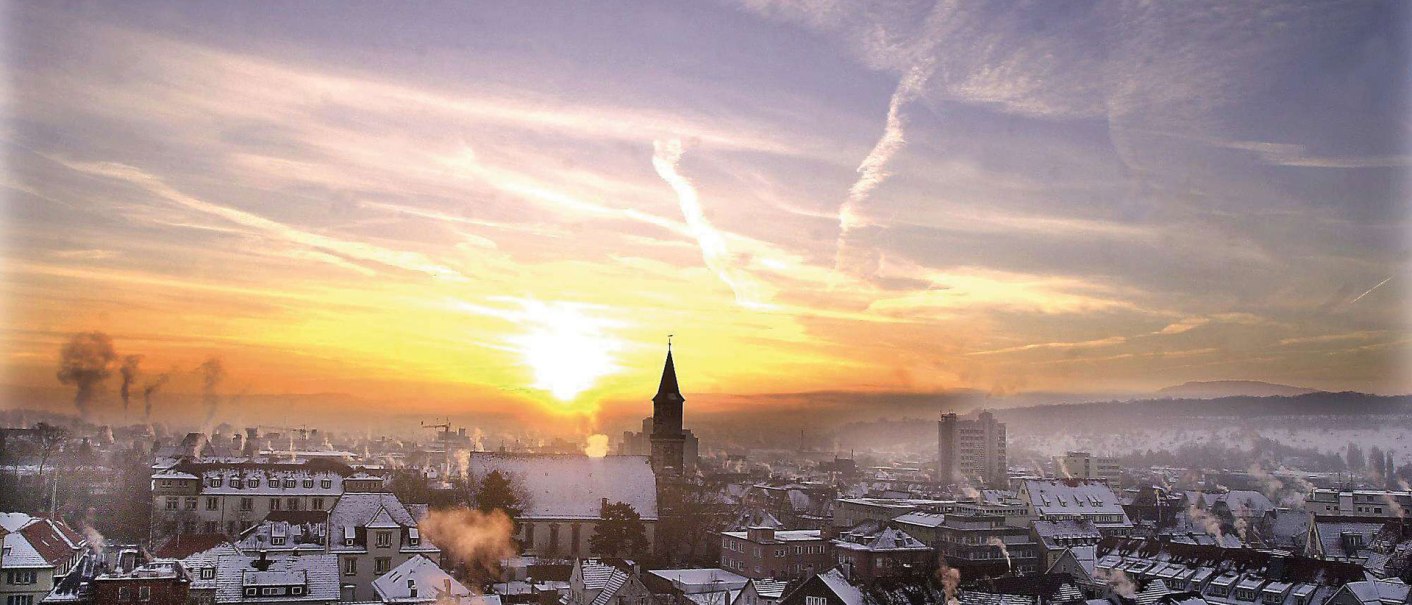Göppingen
Göppingen, a centre of commerce and culture situated between Stuttgart and Ulm in some of Baden-Württemberg's lovliest scenery, lies at the foot of the 684 m-high Kaiserberg, or "Emperors' Mountain" Hohenstaufen, once the site of the ancestral castle of the Staufer dynasty. This is why Göppingen is proud to call itself the "Hohenstaufen City".
Two well-known tourist routes also pass through Göppingen: the "Staufer Route" and the "Heinrich Schickhardt European Culture Route". Numerous examples of Schickhardt's work as master builder under Duke Friedrich I of Württemberg can be seen in many of the towns along the culture route. In Göppingen these include the former inn at the "Christophsbad" baths and the parish church near the castle, built to Schickhardt's design in 1618/19.
History
The earliest traces of a settlement where Göppingen now stands date from the Hallstatt period, 800-480 BC. Traces from Roman times were discovered near to where Oberhofen Church now stands - this was formerly the site of a Roman estate, probably dating from the middle of the 2nd century BC. Only a hundred years later the Alemanni arrived to populate the Fils Valley in the years that followed. Göppingen may take its name from its possible founder, an Alamannic prince by the name of "Geppo".
The ancestral castle of the Staufer dynasty was erected not far from Göppingen in 1070. The two emperors that this dynasty brought forth, Frederick I, known as Barbarossa, and Frederick II, were truly European in their outlook. In retrospect, these rulers can be regarded as exemplary for the unification of the peoples of Europe. In May 1154, the Staufer Emperor Frederick I, Barbarossa, drew up a document "apud Geppingen", the oldest surviving original document in which the name of Göppingen appears. Göppingen is first mentioned in a document from the year 1110, of which only a later copy exists.
In 1396 Göppingen was officially granted the prerogative of coinage for the state of Württemberg. In 1404 the first mention of the Sauerbrunnen mineral spring appears. Ritter Sefrid von Zillenhart, a knight, was given the "Swalbrunnen zu Gepingen" by Count Eberhard III ("the Mild") of Württemberg as a fief. One avid patron of Göppingen's mineral springs and the spa which developed thanks to them was Duke Christoph of Württemberg. In order to provide accommodation for prominent guests who came to take the waters, he commissioned the "Stadtschloss" (town palace) to be built between 1559 and 1568/9 on the site of a previous castle, incorporating the existing surrounding buildings. This Renaissance palace has a spiral stairway with artistic masonry. It is known as the "Rebenstiege", or Vine Staircase, because a grapevine winds its way upwards on the underside of its steps for over two and a half storeys.
During the Thirty Years War, Göppingen shared the fate of many other cities and was first captured by Austrian, later by the Swedish forces. The war ended in 1648, and the return of peace was celebrated in 1650 throughout the land with a festival of praise and thanksgiving. This became a Goppingen tradition and still survives into the present day as the "Göppinger Maientag" (Göppingen May Day). It is one of the oldest regional and children's festivals in Southern Germany and is celebrated in Göppingen much like a "national holiday".
In 1425 the medieval city fell prey to a fire for the first time, and on 25th August 1782 a devastating conflagration again reduced more or less the entire city to ashes. Duke Carl Eugen, who travelled to Göppingen from his palace in Hohenheim that same night, ordered that the city be rebuilt immediately. The chequerboard layout with buildings in the style of Classicism still typifies the centre of Göppingen today, receiving modern accents during the most recent "Neue Mitte" (New Centre) redevelopment project.


